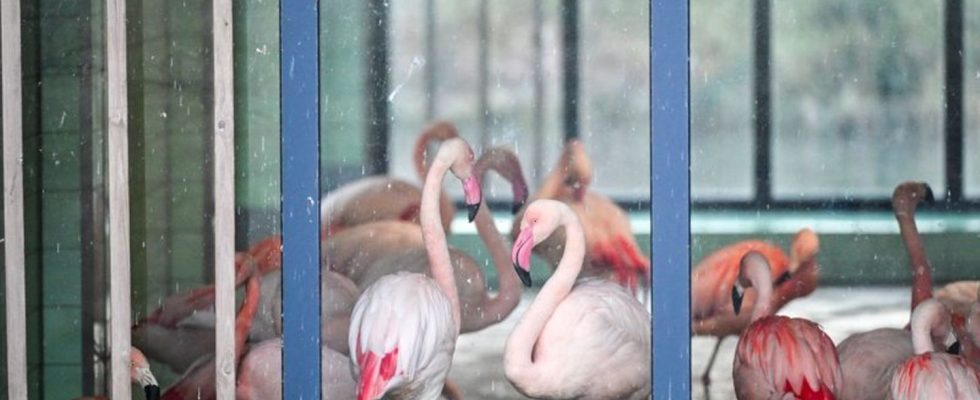Weather
Danger of slipping: Zoo protects animals from ice and slippery surfaces
The flamingos at Berlin Zoo are housed in a stable during the current sub-zero temperatures. With their delicate legs, the animals could incur injuries or slip on sharp-edged ice. photo
© Jens Kalaene/dpa
Some animals really thrive in the cold and become active. Others need to be protected from frostbite – and broken bones.
Danger of slipping and breaking bones: The current sub-zero temperatures can be dangerous for some animals in zoos and animal parks, such as flamingos: “With their delicate legs, the animals could get stuck on sharp-edged objects Ice injuries or slipping,” said spokeswoman and species protection manager Katharina Sperling from the Berlin Zoo to the dpa. The animals are therefore currently better off in a stable.
“Snow and ice can also be dangerous for the giraffes’ long legs – there is an acute risk of slipping, which could result in broken bones,” says Sperling. “However, short trips to the outdoor areas are possible even when it’s cold.” All stables are heated during the cold season and some are also equipped with UV lamps. “Where necessary, the animals have a warm place to retreat to,” she explained.
Only short walks for elephants
Elephants’ time in the fresh air also needs to be reduced. Sperling explained that your winter walk could even be canceled altogether if there was snow and extremely sub-zero temperatures. “The heavyweights could otherwise get frostbite on their feet or ears.”
For some animals, however, winter is actually the preferred season. “Reindeer are particularly active in the cold season because they are optimally adapted to the temperatures in polar regions,” said the spokeswoman. The reindeer’s hollow guard hairs form an effective insulating layer alongside the dense underfur.
The snow leopard is also well equipped for life in snow and ice. “The fur is extremely long and dense, especially in winter. When it’s particularly cold, he puts his long, bushy tail over his body as protection from the cold.”

